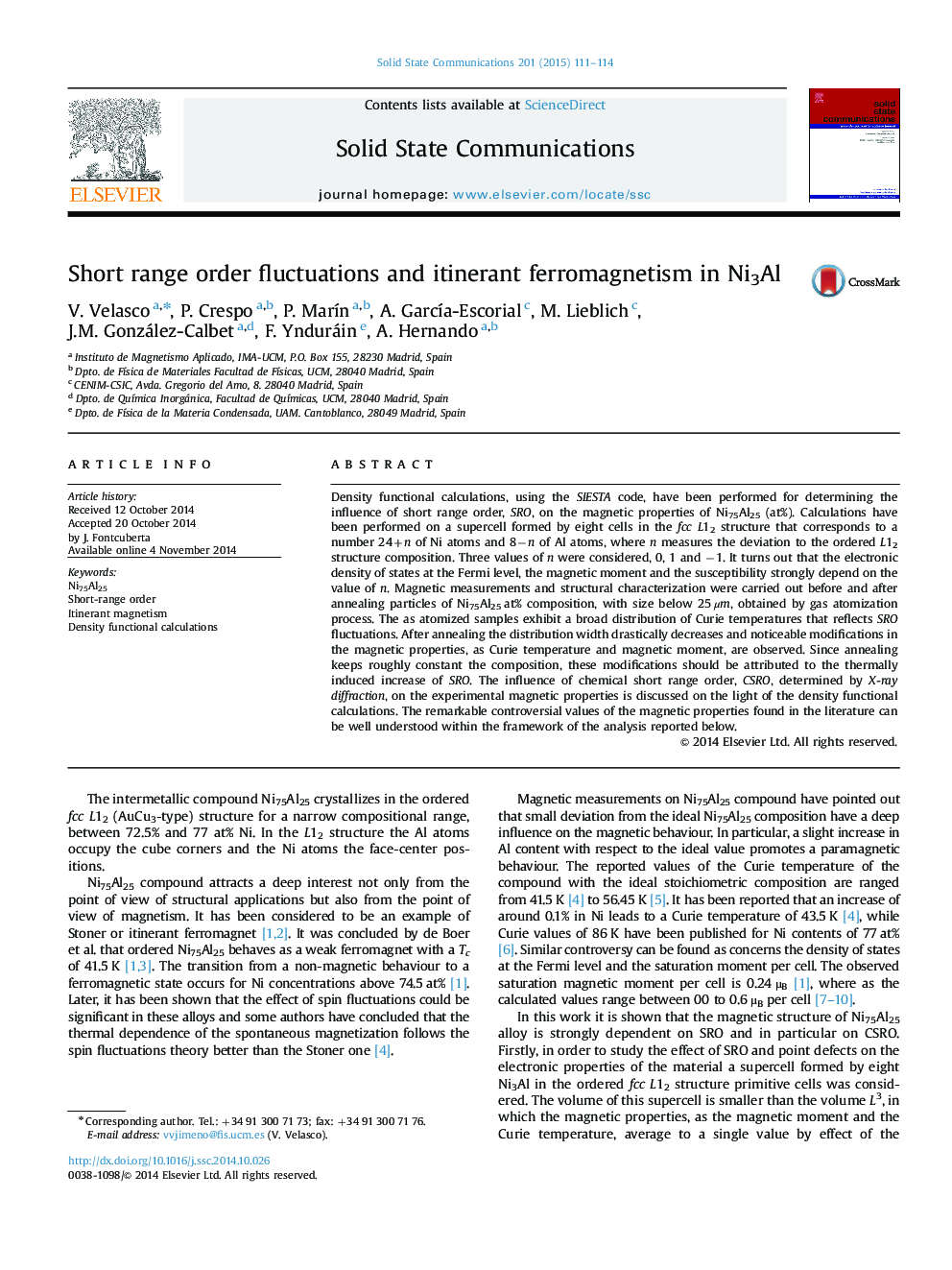| Article ID | Journal | Published Year | Pages | File Type |
|---|---|---|---|---|
| 1591725 | Solid State Communications | 2015 | 4 Pages |
•Intermetallic Ni3Al alloys are prepared by gas atomisation and subsequent thermal treatments.•DFT calculations show that the magnetic properties for Ni75Al25 alloy dramatically change with small compositional deviations.•Thermal treatments do not change average composition of the samples but short range order.•Annealed samples exhibit lower Curie point and higher magnetic moment that atomized sample due to local order changes.•Short range order determines as well as the local composition determines the magnetic properties rather than the bulk or average ones.
Density functional calculations, using the SIESTA code, have been performed for determining the influence of short range order, SRO, on the magnetic properties of Ni75Al25 (at%). Calculations have been performed on a supercell formed by eight cells in the fcc L12 structure that corresponds to a number 24+n of Ni atoms and 8−n of Al atoms, where n measures the deviation to the ordered L12 structure composition. Three values of n were considered, 0, 1 and −1. It turns out that the electronic density of states at the Fermi level, the magnetic moment and the susceptibility strongly depend on the value of n. Magnetic measurements and structural characterization were carried out before and after annealing particles of Ni75Al25 at% composition, with size below 25μm, obtained by gas atomization process. The as atomized samples exhibit a broad distribution of Curie temperatures that reflects SRO fluctuations. After annealing the distribution width drastically decreases and noticeable modifications in the magnetic properties, as Curie temperature and magnetic moment, are observed. Since annealing keeps roughly constant the composition, these modifications should be attributed to the thermally induced increase of SRO. The influence of chemical short range order, CSRO, determined by X-ray diffraction, on the experimental magnetic properties is discussed on the light of the density functional calculations. The remarkable controversial values of the magnetic properties found in the literature can be well understood within the framework of the analysis reported below.
